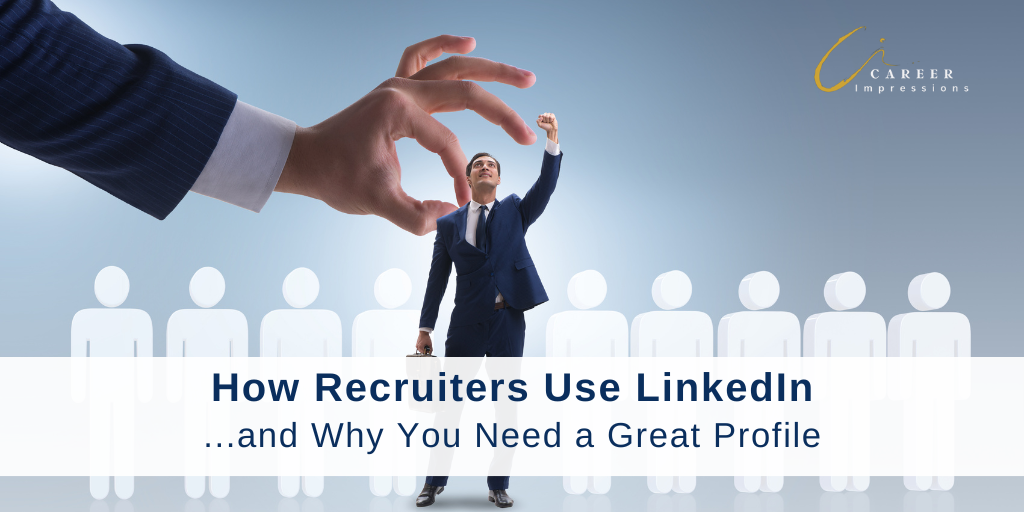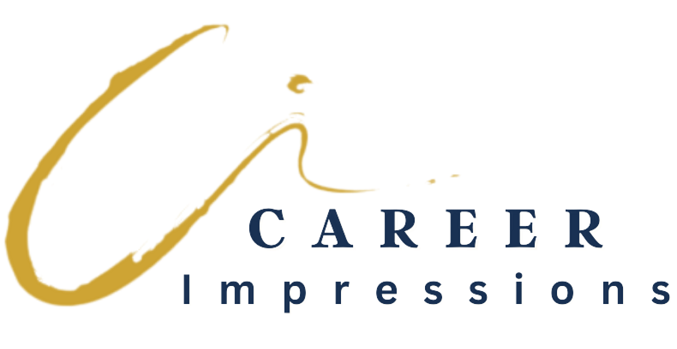
How Recruiters Use LinkedIn and Why You Need a Great Profile
Recruiters often utilize both LinkedIn profiles and resumes during the hiring process. However, the extent to which they prioritize one over the other can vary based on different recruitment focuses and activities.
I asked recruiters to weigh in, and they shared many insightful tips on using LI in their processes and the benefits of having a great profile (job searching or not!). You might be surprised that having a completed LinkedIn profile can be just as important as having a great resume – if not more so.
Two Big Ways that LinkedIn Profiles are Used in Recruiting
-
Search and Outreach
Recruiters frequently use LinkedIn profiles for initial screening and outreach, especially those who source candidates. Headhunters search for potential matches on LI using specific keywords, skills, or experiences relevant to the job opening. LinkedIn profiles may receive more attention than resumes by recruiters actively hunting talent because they often use LinkedIn as a starting point. The right profiles, populated with related career details, skills, and results, will be found in searches.
Ed Han, senior recruiter and talent acquisition leader, agrees that LinkedIn is the place to go for candidate searches: “When I go searching for people, I usually will search LinkedIn to find them. After all, there are 1.1 billion profiles [on LinkedIn], vs. what, a few hundred million at best on a job board.”
According to talent acquisition leader Chris Kapusta, “LinkedIn profiles are used heavily when sourcing talent. If a resume isn’t provided yet, a person’s LinkedIn profile will be the primary conversation driver. Again, this does depend on the recruiter. Since I primarily source talent, I lean more towards a LinkedIn profile than a resume.”
However, if a LinkedIn profile is not populated with the right content, it increases the chances of it not being found or getting passed up. Senior recruiter Matt Hearnden warns, “if I come across your profile and can’t see much detail of what you’ve done, I’ll be forced to skip over it.”
Finally, headhunter Richard King shares this insight: “My clients don’t advertise their roles. They pay me to find prospects to interview. And guess where my team hunts….drum roll please…..LINKEDIN! Make a headhunter want to DM you!”
-
Verification and Validation
Many recruiters use LinkedIn profiles to further verify and validate career information provided by candidates in a resume. Discrepancies or inconsistencies between the two documents may cause concern.
“Recruiters expect to see a well-rounded profile that includes comprehensive information about a candidate’s work history, education, and skills. Incomplete or inaccurate information can raise red flags and deter recruiters from pursuing a candidate further. Ensuring that all sections of your LinkedIn profile are filled out with accurate and up-to-date information is important. It matters quite a bit these days” shares Arpad Szakal, an executive talent and leadership consultant.
Christopher Redmond, head of recruitment, agrees and shares, “If I receive an application, I will go straight to LI to find their profile. If you have a profile that is up to date it gives me a better picture of the person. As a candidate, you have an opportunity on LinkedIn to sell yourself. I usually look at activities, have they posted much about any interesting topics, what have they liked recently? This all gives me an insight into the person that I do not get from a CV. If the person is qualified, I will, of course, schedule a call, but these additional aspects could be the reason you get that initial call or not.”
Finally, recruiter Nicole Jancsek reminds us about the importance of filling the profile with additional and relatable content: “Adding skills to your profile is also helpful, especially highly technical roles where I am looking for candidates with specialty skills.”
Are LinkedIn Profiles Read More than Resumes?
The extent to which recruiters prioritize LinkedIn profiles over resumes or vice versa can vary based on individual preferences, recruiter type, and hiring process. Some recruiters may rely more heavily on LinkedIn for candidate sourcing and initial screening, while others may place greater emphasis on resumes for evaluating candidates’ qualifications and experiences.
Due to the nature of his work, Han reads LinkedIn profiles a lot more than resumes: “I see *at least* one order of magnitude more profiles than I ever will resumes…Once I get a response from someone I sourced on LinkedIn–which might involve several phases of increasingly refined searches–and if that person is interested, they might send a resume to me. On further reflection, maybe it’s two orders of magnitude [more profiles than resumes]”.
And even if a recruiter doesn’t read your profile first, “I’ll certainly have a look at the LinkedIn profile of anyone I’m screening. Another reason to have it properly filled out,” says Hearnden.
Both documents play complementary roles in the hiring process, and recruiters may use them in tandem to make informed decisions about candidate suitability and fit. However, although resumes remain essential in a job search, having a fully populated LinkedIn profile is not optional. A well-developed LinkedIn profile is necessary regardless of role, career level, or background!
Still not convinced? Read on to learn more benefits of getting your LinkedIn profile up to snuff.
LinkedIn Profile Benefits You Need to Know
-
Increased Visibility and Reach
Unlike a resume typically shared with specific individuals or organizations, a LinkedIn profile is accessible to a broader audience, including recruiters, hiring managers, industry professionals, and potential collaborators. This increased visibility enhances your chances of being discovered by relevant stakeholders, leading to more networking opportunities and possible job offers.
King puts it best: “LinkedIn is the icing on the cake; the cake being one’s resume. Employers are overrun with job applicants. 300, 400, 500 per role. It’s insane. So, how to select a shortlist? Filter through and select 20-30…and then check their LI profiles. Hello! Having a strong, heck even a completed profile may be just the icing one needs to get an interview.”
-
Additional Insights
LinkedIn profiles allow for a more dynamic and interactive presentation of your professional background compared to a static resume. You can include multimedia elements such as links to projects, presentations, articles, and videos, providing a more comprehensive overview of your skills, accomplishments, and expertise. This multimedia-rich format can captivate viewers’ attention and effectively showcase your capabilities.
But good profile basics matter, too. “I like to see who, what, where, and why with a little personality. Who are you? experience and motivators. What are you looking for? role type, industry, etc. Where are wanting to be located? Are open to relocation or not? Why should I connect with you?” says Kapusta.
-
Networking and Relationship Building
In addition to sharing and promoting your career narrative, LinkedIn serves as a powerful networking platform, facilitating connections with peers, industry leaders, recruiters, and potential employers. LinkedIn enables you to actively engage with your network by sharing updates, participating in discussions, and endorsing or recommending others. These interactions help strengthen professional relationships, expand your network, and increase your visibility within your industry or field. “LinkedIn is a giant networking party. … and you get out what you put in”, says King. There is so much more to LinkedIn than just completing a profile. You want to engage, connect, learn, and share!
Yet, HOW you engage on the platform will also be judged. Claire Davis, a former pharma recruiter, reminds us that recruiters may also be on the lookout for “angry, politically charged, or demeaning posts…a quick scroll can tell us a lot about personality, how they’ll represent a company, etc.” So be careful about what you share. Beyond building a great profile, using the site wisely and professionally is imperative.
LinkedIn profiles matter greatly in hiring and recruiting. You need a strong, fully populated profile to increase your chances of getting found and standing out. Former recruiter Ben Wiant shares these parting thoughts: “Your LinkedIn profile should stand on its own as your online resume – it’s often the first place you will be found by a recruiter, and you have to have a robust profile for them to find you.”
Never risk it – ensure your job search activities involve carefully creating a great resume AND LinkedIn profile.
Are you looking for help building a great resume and profile so you can get found for the right job? I can help. Reach out to discuss.
